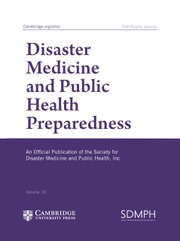No CrossRef data available.
Article contents
Escalating Health Crisis: Dissecting Mortality Causes and Trends Among Indigenous Populations in Northeast Brazil
Published online by Cambridge University Press: 28 October 2024
Abstract
In Northeast Brazil, the poorest region of the country, indigenous communities face critical health care challenges. Despite legal entitlements to the Unified Health System (SUS), systemic barriers persist, exacerbating health disparities and mortality. This ecological study analyzed mortality trends and causes of death within the Special Indigenous Sanitary District (DSEI) Alagoas-Sergipe over a decade.
Data on deaths from 2012 to 2022 were obtained from the Indigenous Health Secretariat. Causes of death were classified into 13 categories. Mortality rates per 1,000 indigenous inhabitants were calculated, and trends were analyzed using the Mann-Kendall test. The study also compared causes of death by age group.
Mortality rates ranged from 3.3 to 5.2 per 1,000, showing a moderate upward trend over time (τ = 0.5, p = 0.042). Predominant causes included heart and vascular disorders (24.3%), external causes (12.4%), respiratory issues (11.1%), and infections (10.9%). About one-third of pediatric deaths were associated with general neonatal complications.
This study highlights increasing mortality in indigenous communities in Northeast Brazil. The predominant causes of death reflect broader public health concerns. These trends emphasize the urgency for more effective, culturally sensitive public health policies and improved health care access.
- Type
- Research Letters
- Information
- Copyright
- © The Author(s), 2024. Published by Cambridge University Press on behalf of Society for Disaster Medicine and Public Health, Inc.


